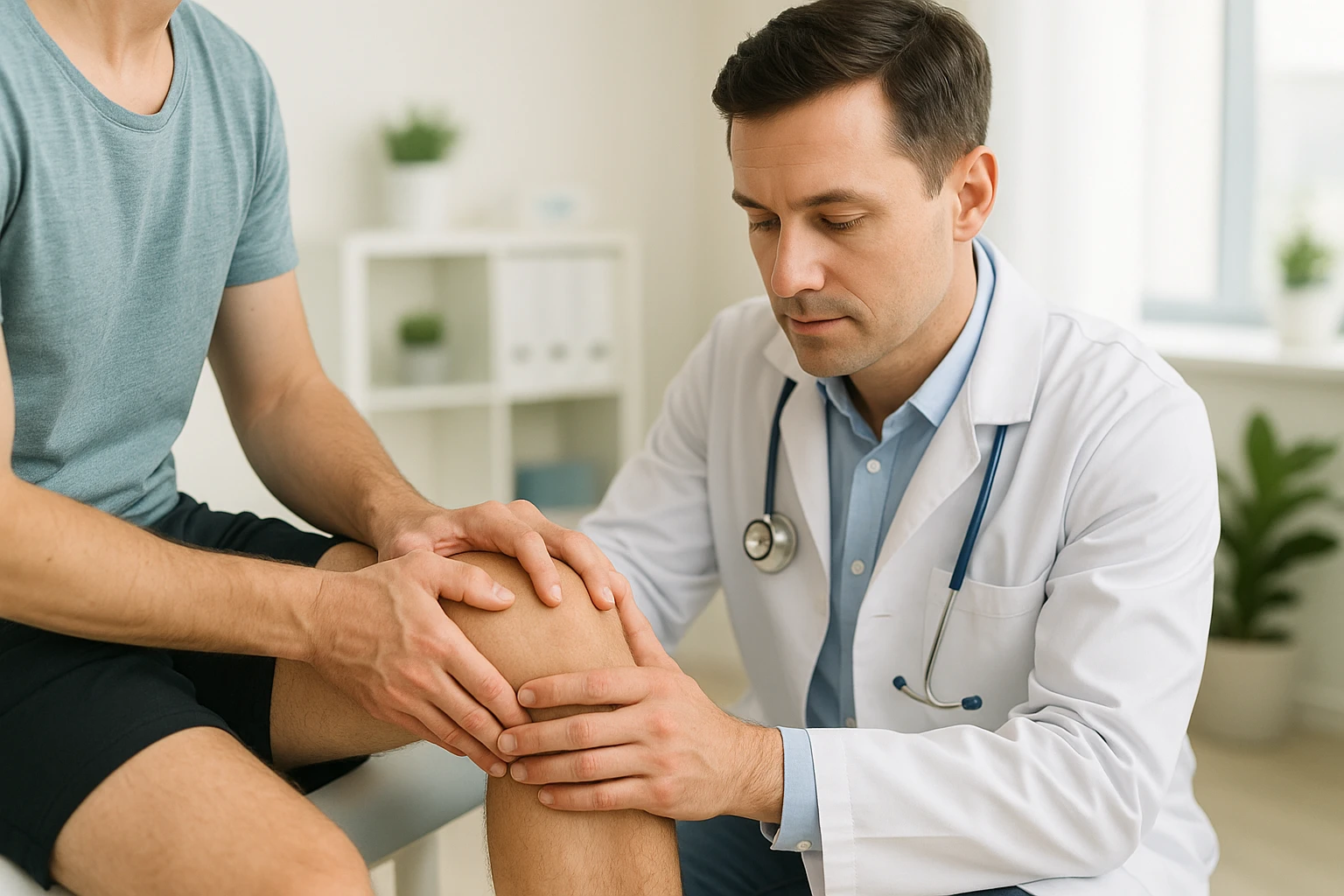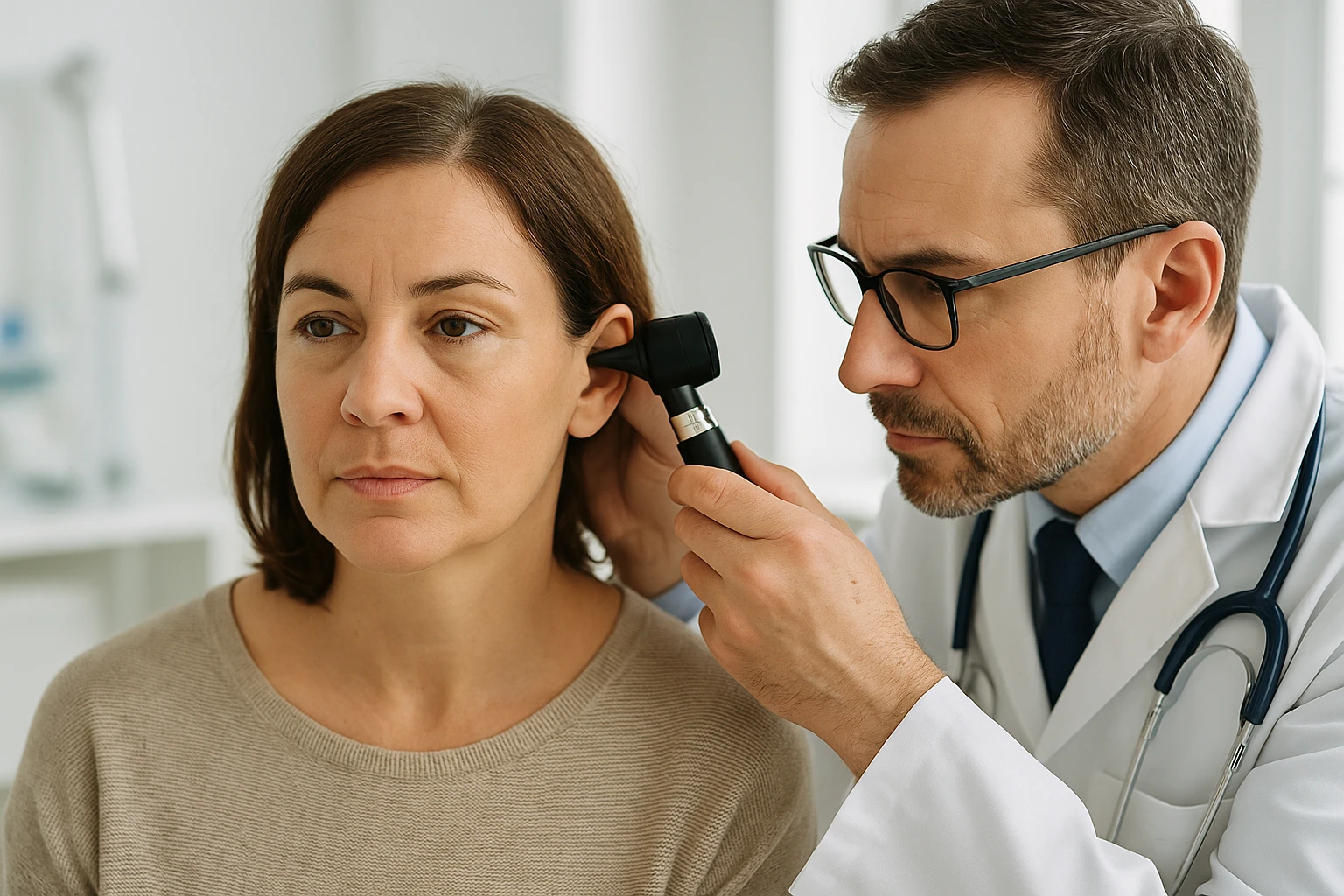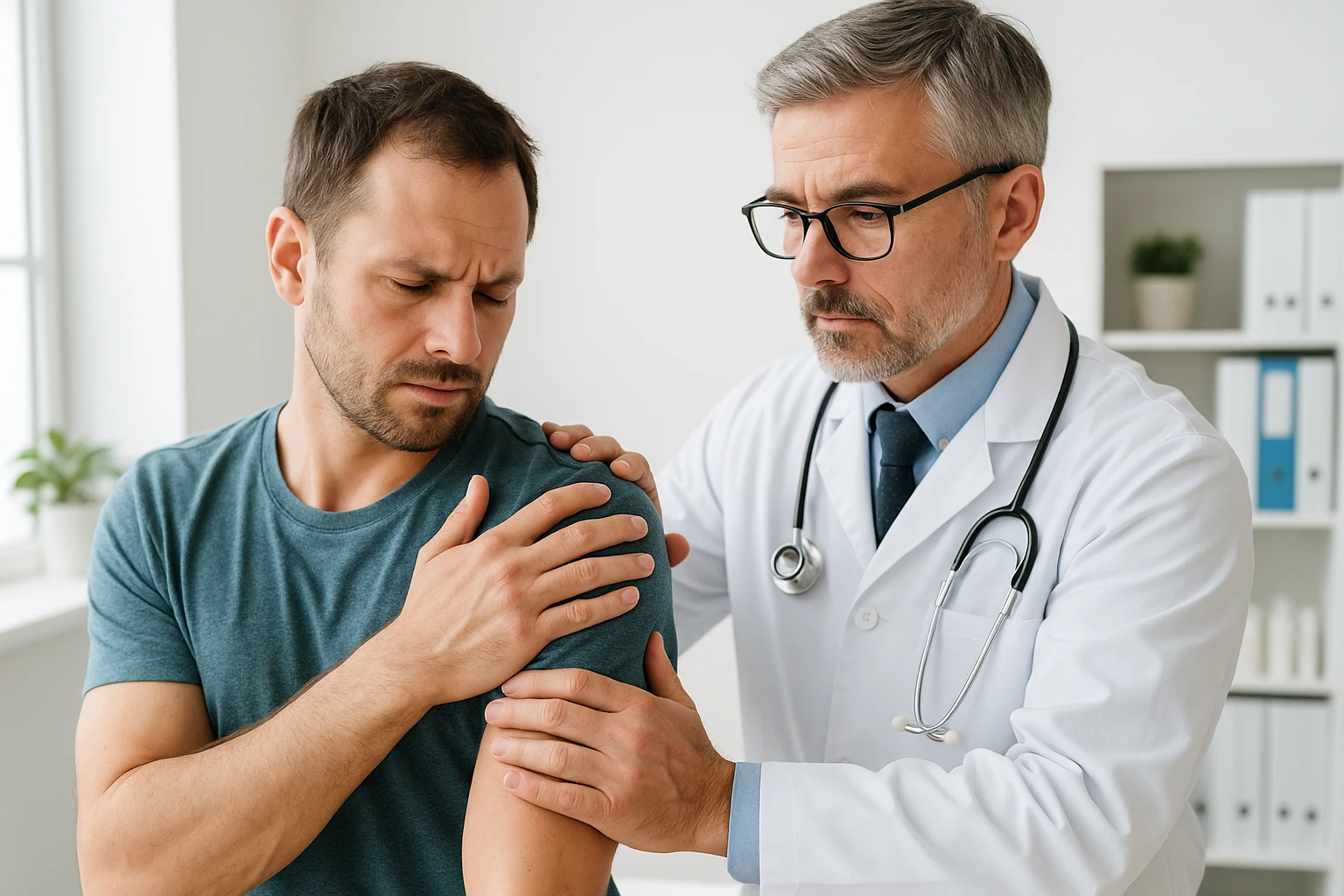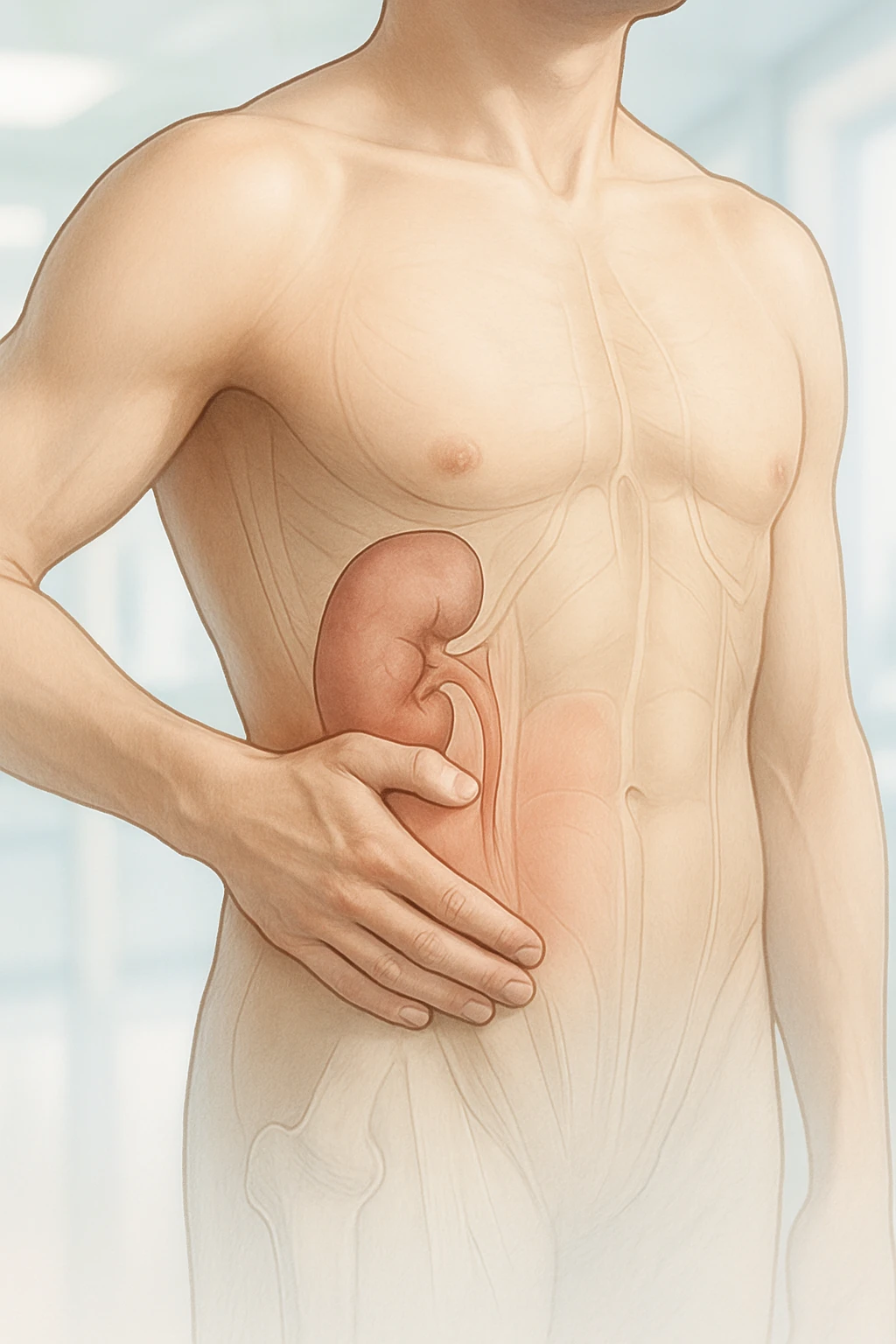Managing Knee Pain: When to Seek Medical Evaluation
Knee Pain and Daily Life
Knee pain can affect people of all ages, including children, teens, and adults. It often becomes noticeable during everyday activities, such as walking, climbing stairs, playing sports, or even getting up from a chair. When the knee is uncomfortable or not moving the way it should, it can make routine movements feel more difficult and can sometimes lead to frustration or worry, especially for families watching a child who suddenly seems less active than usual. The knee plays a major role in supporting the body’s weight and helping us move smoothly, so even small changes in function can have a noticeable impact on daily life.
How Knee Pain Shows Up
Knee pain can appear in several different ways. Some individuals feel pain only when they put weight on the knee, such as when walking or running, while others notice discomfort even when resting. Swelling may occur around the joint, and the knee may feel warm or tender to the touch. Stiffness is also common and can make bending or straightening the knee feel harder than usual. These symptoms can lead to reduced movement, where the knee does not bend or straighten as much as it normally would.
In some cases, the knee may make sounds or movements that feel unusual. A knee that locks, catches, or suddenly gives way can be especially concerning. These sensations can suggest that something inside the knee, such as cartilage or ligaments, is not moving smoothly. When this happens, a person may feel unsure about putting weight on the leg, which can lead to changes in how they move and use the knee.
Changes Families May Notice
One of the first signs of knee discomfort may be subtle changes in how someone moves. Families may observe:
- Limping or favoring one leg
- Slower walking or shorter steps
- Sitting out of playtime or sports activities
- Choosing the elevator instead of stairs
- Hesitating before standing up from the floor or a chair
These behavior changes are often a natural response to pain or stiffness. The body tries to protect the knee by reducing movement or adjusting posture, even if the person is not consciously aware of doing so. Families who notice these shifts can use them as gentle cues to pay attention and consider whether the knee may need rest, evaluation, or support.
What Causes Knee Pain?
Knee pain can come from several different sources, and understanding the reason behind it can help families recognize when to seek care and how to support recovery. The knee is a joint that supports the body’s weight, bends and straightens during movement, and helps with balance. When any part of the joint is irritated or injured, discomfort may appear during everyday activities such as walking, climbing stairs, or playing sports. Knee pain arises from acute trauma, overuse syndromes, degenerative osteoarthritis, and biomechanical malalignment. Because different causes affect different parts of the knee, identifying the type of pain and when it occurs can provide helpful clues.
Injury-Related Pain
Some knee pain begins after a clear incident, such as a fall, awkward landing, or a sudden twisting motion. Injuries to the ligaments or cartilage inside the knee can happen during sports, physical play, or unexpected missteps. Meniscal tears often follow twisting injuries and show joint-line tenderness, meaning the pain is felt along the edges of the knee. These types of injuries can make the knee feel unstable, especially when turning, pivoting, or changing direction. Activity may become difficult, and it is common to notice discomfort when trying to return to normal movement.
- Fall or misstep leading to sudden pain
- Twisting motion during sports or play
- Pain along the edge of the knee
- Feeling of instability or difficulty changing direction
Injury-related pain may also appear after everyday accidents, such as slipping on a step or bumping the knee against a hard surface. Even when the injury seems minor at first, swelling or stiffness can build over time. Not all injury-related knee pain is severe, but when pain does not improve or limits movement, evaluation may help clarify the underlying issue.
Overuse and Repetitive Strain
Knee pain is not always the result of a single incident. It can also develop gradually when a specific motion or activity is repeated often. Bursitis and tendinopathy reflect overuse with localized tenderness. These conditions may appear in people who kneel frequently, jump repeatedly, or increase activity levels quickly, such as when starting a new sport season or exercise routine. The tissues around the knee can become irritated when they are asked to do too much too soon.
- Frequent kneeling or squatting
- Repetitive jumping or running drills
- Sudden increase in training or activity
- Localized soreness that worsens with continued activity
This type of pain may begin as mild soreness and can worsen if the activity continues without rest. Families may notice this most in children or teens who are highly active or adjusting to new training demands.
Growth, Muscle Strength, and Alignment
Sometimes knee pain is related to how the knee moves rather than a specific injury or overuse. Patellar tracking disorders and muscle imbalance contribute to anterior knee pain, which is discomfort felt at the front of the knee. When the muscles around the knee and hip do not work together effectively, the kneecap may not move smoothly. This is particularly common during periods of growth or increased activity.
In these situations, pain may be more noticeable when going up or down stairs, sitting for long periods, or during activities that involve squatting or bending. The discomfort may come and go but can influence daily participation in physical activities.
Wear-and-Tear and Arthritis
As people get older, the cartilage that helps the knee move smoothly can gradually change. This can contribute to stiffness and activity-related pain. Degenerative changes may become more noticeable with weight-bearing activities such as walking or rising from a seated position. The progression is typically gradual, and the discomfort may vary from day to day.
How Doctors Evaluate Knee Pain
Knowing what to expect during a medical evaluation can help families feel more at ease when seeking care for knee pain. The purpose of the evaluation is to understand what is causing the discomfort and how it affects daily movement. The process is typically step-by-step and focused on gathering clear information, rather than rushing to tests or treatment. The goal is to support the person experiencing pain and determine the safest, most effective approach to recovery.
When to Get Help
Some symptoms indicate that medical care should be sought right away. Inability to bear weight after an injury, marked swelling, visible deformity, or concern for a fracture or dislocation requires prompt assessment. These signs suggest that the structures inside the knee may be significantly affected and need urgent attention.
- Inability to stand or walk normally after injury
- Significant swelling that develops quickly
- Visible change in knee shape or alignment
- A feeling that the knee is “out of place”
However, knee pain does not always require emergency care. Medical review is indicated for pain persisting beyond several days or for symptoms that repeatedly return, especially if they interfere with walking, school activities, sports, or daily tasks at home. Recurrent instability, such as the knee giving way, is another reason to schedule an evaluation. Families should know that seeking care early can help prevent symptoms from becoming more limiting.
What Happens During the Exam
A knee evaluation usually begins with a conversation about when the pain started and what activities make it better or worse. This helps the clinician understand the context of the discomfort. The physical examination then includes inspection of the knee to observe alignment and swelling, palpation to identify tender areas, and range-of-motion testing to see how the joint bends and straightens.
- Inspection for swelling and alignment
- Palpation to locate tender or irritated areas
- Range-of-motion testing
- Ligament and meniscal stability tests
The clinician may also perform ligament and meniscal tests to assess the stability and smooth function of the joint. These assessments are gentle and controlled, designed to identify which structures may be contributing to the pain. This hands-on part of the exam helps narrow down potential causes without the need for immediate imaging.
How Imaging Is Used
Imaging is sometimes part of the evaluation, but not always necessary. Radiographs (X-rays) assess bone and joint space and are often used if injury, swelling, or structural change is suspected. They can help identify conditions such as fractures or joint alignment concerns.
- X-ray: shows bones and joint space
- MRI: shows cartilage, ligament, and tendon conditions
- Used only when exam suggests deeper involvement
MRI may be used when soft tissues need closer evaluation, such as when cartilage, tendons, or ligaments are suspected to be injured. MRI provides a more detailed look, but it is typically reserved for situations where the physical exam suggests deeper involvement or when pain does not improve as expected. Not every case of knee pain requires advanced imaging, and the decision is based on clear clinical findings.
Treatment Options and How to Protect Knee Health
Many approaches can help manage knee pain and support healing, and the best option depends on the cause of the discomfort and how it affects daily life. Treatment often begins with conservative strategies that aim to reduce strain on the knee, manage discomfort, and improve the way the joint moves. Prevention and long-term care also play an important role, helping reduce the chance of pain returning.
Non-Surgical Care First
In many cases, treatment starts with changes to activity. First-line care includes activity modification, analgesics or NSAIDs, and targeted physiotherapy. This may involve reducing movements that irritate the knee and allowing time for tissues to heal. Pain relief medications can help manage symptoms, especially in the early stages.
- Adjusting activities to reduce strain on the knee
- Using short-term pain relief options when appropriate
- Participating in guided physical therapy exercises
- Gradually rebuilding strength and confidence in movement
Physical therapy is often a key part of recovery. Strengthening certain muscle groups and improving how the knee moves can help support the joint and reduce strain. These exercises are designed to be gradual and controlled, building stability and confidence in movement without overloading the knee.
Supports and Bracing
Bracing or assistive devices can improve stability or offload compartments when pain or weakness is present. A brace may be used to help support the knee during activity or to prevent specific motions that cause discomfort. Some people also benefit from using a walking aid temporarily to reduce pressure on the joint while it recovers.
- Braces for added knee stability
- Assistive devices to reduce pressure during movement
- Supports used alongside strengthening and movement training
These supports are usually introduced as part of a broader treatment plan. Their purpose is to provide comfort and stability while the underlying issue improves through strength-building and activity adjustments.
Surgical Approaches When Needed
While many cases of knee pain improve with non-surgical care, there are times when a structural issue requires a surgical approach. Surgery is considered for specific structural lesions or failed conservative care. This usually means the pain has not improved despite rest, physical therapy, and other supportive treatments.
Surgical procedures vary depending on which part of the knee is affected. The decision to move forward with surgery is made carefully, taking into account symptoms, daily function, and goals for activity. Families can expect to have a thoughtful discussion with a healthcare professional about risks, benefits, and recovery expectations.
Keeping Knees Healthy for the Long Term
Even after pain improves, protecting knee health can help reduce the chance of symptoms returning. Healthy body weight reduces tibiofemoral and patellofemoral joint loading, which means the knee experiences less pressure during walking, running, and standing. This can make a meaningful difference over time.
- Maintaining a healthy body weight to reduce knee load
- Strengthening quadriceps, hamstrings, and hip abductors to support knee motion
- Increasing activity levels gradually to avoid overstrain
- Allowing time for rest and recovery between activities
Strengthening quadriceps, hamstrings, and hip abductors improves knee mechanics and lowers injury risk. These muscle groups help guide knee movement and absorb force during daily activities. Gradual increases in physical activity, attention to proper movement form, and allowing time for rest also support joint health. These habits benefit not only recovery but long-term mobility and comfort.
Frequently Asked Questions
Is knee pain always caused by an injury?
No. Knee pain can also develop gradually from overuse, muscle imbalance, or age-related changes in the joint. Not all knee discomfort is linked to a single incident.
Why does knee pain sometimes feel worse when going up or down stairs?
Stair climbing increases the load on the front of the knee. If the muscles around the kneecap are not working together smoothly, this extra pressure can make discomfort more noticeable.
What does it mean if the knee locks or suddenly gives way?
Locking, catching, or giving way may suggest that internal structures, such as the meniscus or ligaments, are not functioning smoothly. This is a sign that a medical evaluation may help clarify the cause.
How long should knee pain last before seeing a healthcare professional?
If pain lasts more than a few days, keeps returning, or affects daily activities like walking or playing, it is reasonable to schedule an evaluation. Prompt attention can help guide safe recovery.
Do all knee pain cases require imaging like X-rays or MRI?
No. Imaging is used when the examination suggests bone, alignment, or soft tissue involvement. Many cases can be evaluated through history and physical exam alone.
Can exercise help reduce knee pain?
Targeted strengthening of muscles around the knee and hip can improve joint support and movement control. These exercises are typically gradual and guided to avoid extra strain.
When is surgery considered for knee pain?
Surgery is usually considered when there is a specific structural issue or when symptoms do not improve after a period of conservative care. The decision is based on function, goals, and clinical findings.
What habits help protect knee health over time?
Maintaining balanced strength, increasing activity levels gradually, and allowing time for rest can support knee comfort and movement. A healthy body weight also reduces pressure on the joint.













